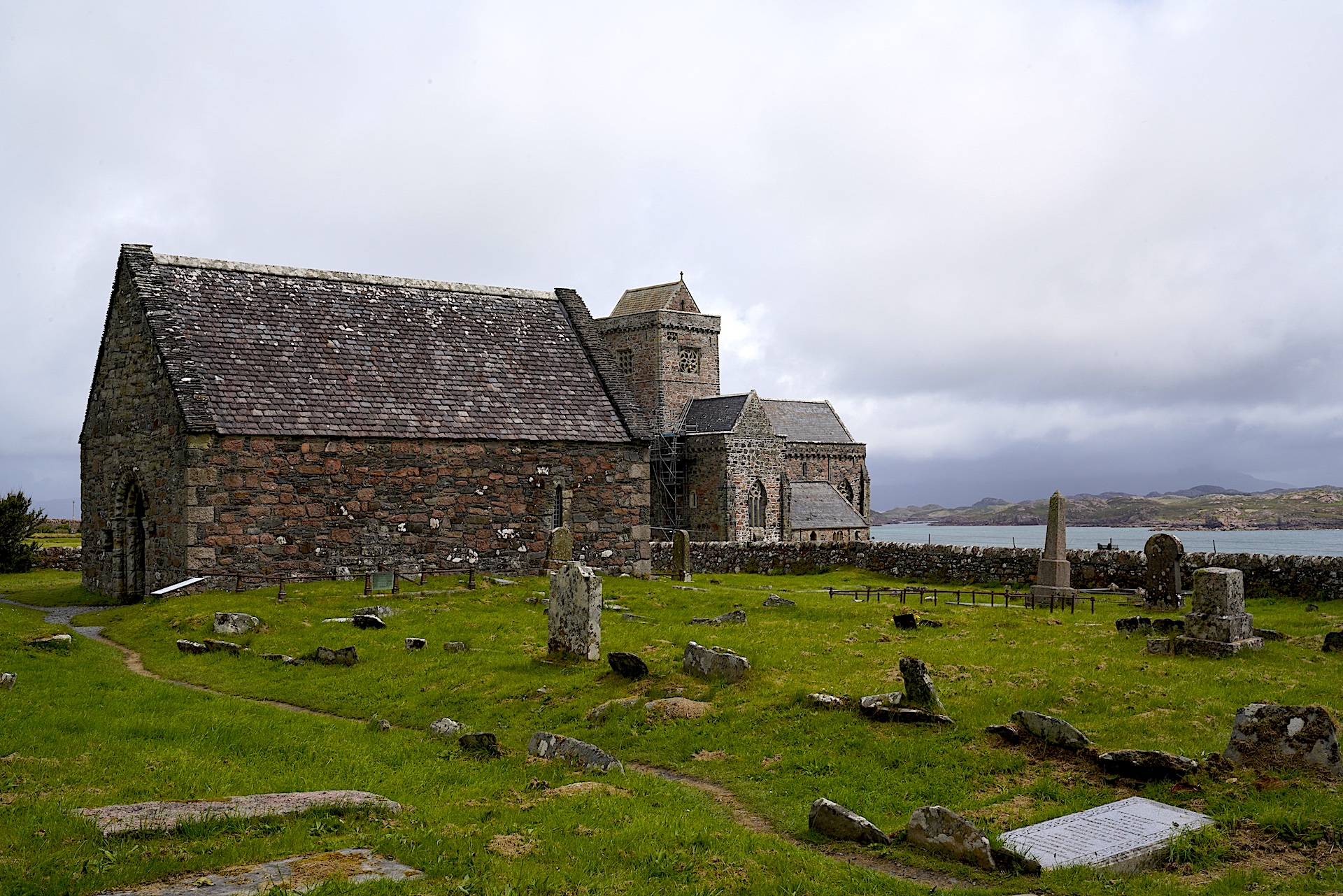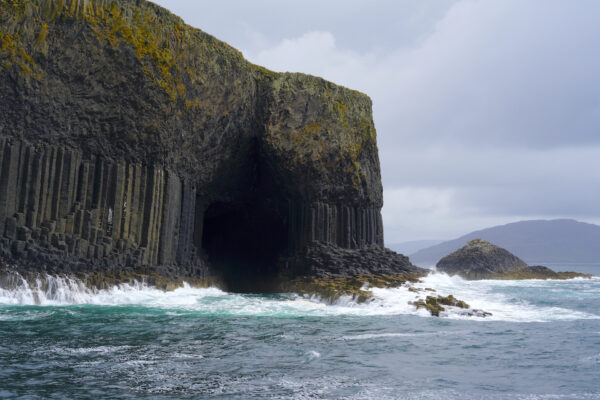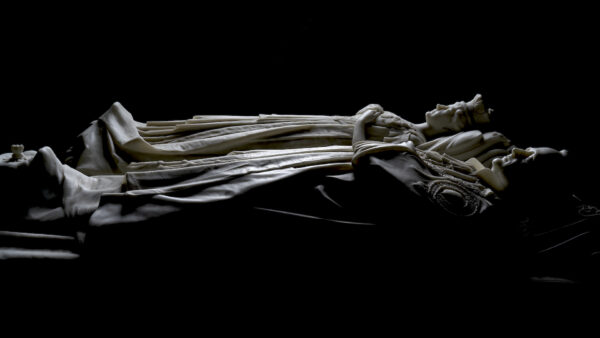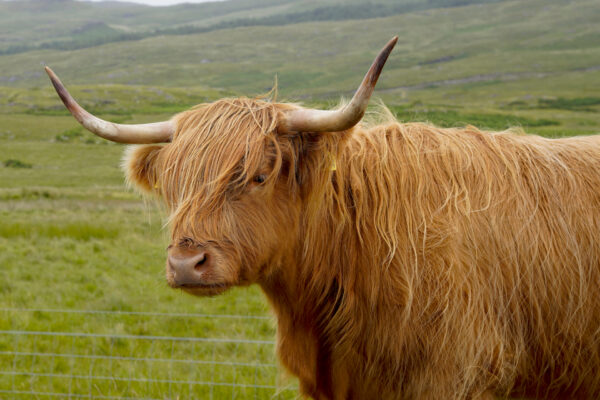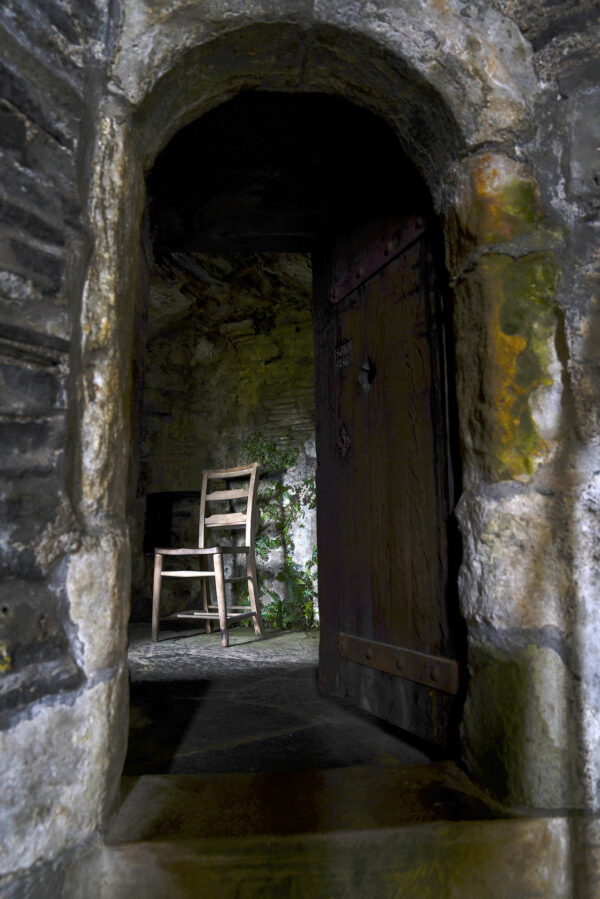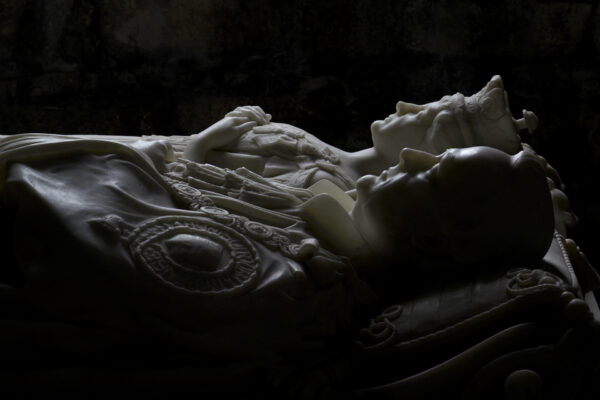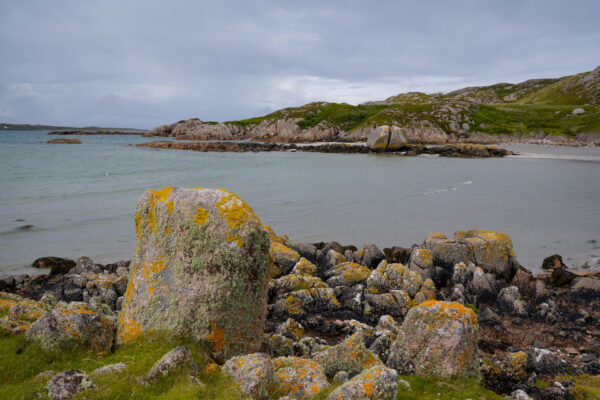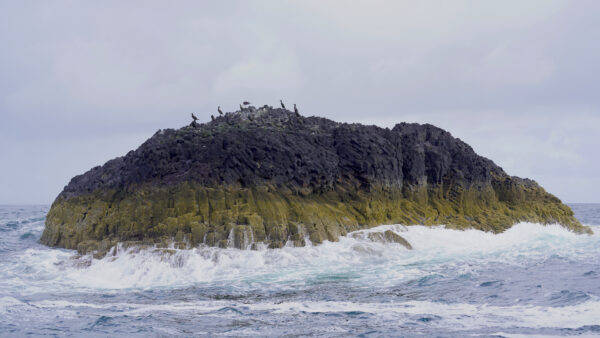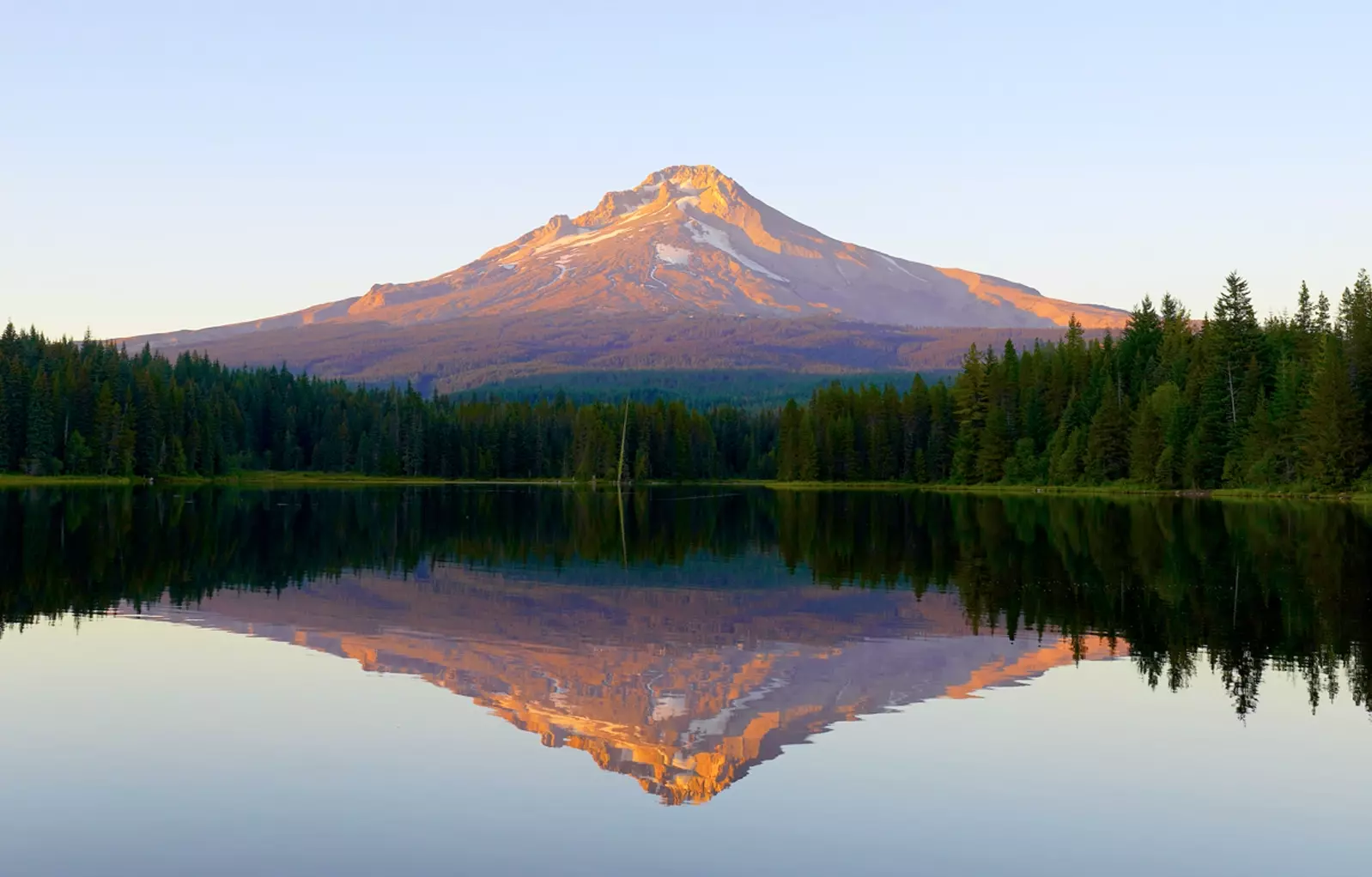Select photographs in this article are available as custom prints. Click on the shopping cart icon to see print media and sizing options. Click on the square icon for a full-screen view of the image.
The wild and scenic Middle Hebrides Islands off the West Coast of Scotland offer a glimpse into the Scotland of days gone by, with miles of gorgeous country largely devoid of human development and a coastlines teaming with wildlife. Visiting the Middle Hebrides is normally a full day commitment, but to really explore them well would take much longer.
The largest and most populated island in the group is Mull, which lies west of the lively port town of Oban on the Scottish mainland. To the west of Mull are several smaller islands which are often visited, including the historically significant Isle of Iona plus wildlife-filled Staffa and Treshnish Isles. Others in the group include the larger populated islands of Lismore, Kerrera, Coll, and Tiree plus the little islands of Ulva and Gometra off western Mull.
This article includes everything you’ll need to plan your trip, including transportation, area highlights, and a few itinerary options. At the bottom of the article are important booking links you’ll likely need. Additional informational links are sprinkled throughout the article.
Ancient legends surround Fingal’s Cave on the wild Isle of Staffa off the west coast of Mull. This site does a great job telling the story: https://scotlands-stories.com/fingals-cave/
Fingal’s Cave
We drove all the way across the southern end of the wild and scenic Isle of Mull via 35 miles of signal-track roads to reach the tiny village of Fionnphort and from there take a boat tour to see Fingal’s Cave, cut into the side of the remote Isle of Staffa in Scotland’s Middle Hebrides … Read more
Getting to the Middle Hebrides
Ferries
Reaching any of the Middle Hebrides generally involves a ride on a CalMac ferry, normally sailing from Oban although there are other crossings from the mainland to Mull. From Mull there are short ferries to Iona and Ulva. Tours of Treshnish Isles and Staffa leave from both Oban on the mainland and from the little community of Fionnphort on the far southwestern tip of Mull. Tiree is reached via ferry from Coll and it also has a small airport. I recommend making a reservation for your sailings between Oban and Craignure (main ferry terminal on Mull) as that ferry can fill up. You’ll find the CalMac ferry link at the bottom of the article.
Getting Around
Cars are allowed on the major ferries. You need either a car or a great road bike and a strong set of legs to get around Mull. Driving on Mull is not for the faint of heart; expect the majority of roads to be paved single tracks with frequent passing places and a speed limit of 60mph, which is utterly terrifying to be going that fast on a one-lane road as you approach a blind corner or summit. Thankfully traffic is extremely light and you don’t have to go the speed limit. Use the passing places to let faster vehicles get around you so you can feel safer and also enjoy the absolutely beautiful scenery.
The main roads become bigger two-lane highways around and between the larger towns in places where the terrain is less rugged.
Expect mainly single-track roads Lismore, Kerrera, Coll, and Tiree. Cars are discouraged on Iona.

The light fell so gracefully on these incredible stone effigies in Iona Abbey – cold and silent, yet so peaceful and dignified.
Eternal Silence
I don’t normally take shots like this, but the soft light hit these gorgeously carved marble effigies so perfectly. While the figures lay in eternal silence, this is one of those pictures that is worth a thousand words. Memorialized here is George Campbell, the 8th Duke of Argyll, and his wife, Countess Ina MacNeill. Visitors … Read more
Things to See and Do
Isle of Mull
Mull is quite large – it’s an hour drive from the main ferry dock at Craignure to Fionnphort, and about 45 minutes from Craignure to the picturesque waterside village of Tobermory. On Mull you’ve got a huge variety of things to see and do, from distillery tours to castles, waterfalls, scenic beaches, and even neolithic stone circles. Here are a few highlights:
Central Eastern Mull: Craignure and Salen
Craignure is likely where you will arrive on Mull. It’s pretty much just a ferry terminal with a post office, a business or two, and a handful of homes. Just south of Craignure are two significant castles worth a visit. A short walk through the woods brings visitors to Torosay Castle whose highlight is an elegant walled formal garden. Views look across the water to nearby Duart Castle standing on a rocky prominence above the South of Mull. This historic stronghold of Clan MacLean is tourable and includes a cafe. I believe it is still a functioning family home. Duart Point Lighthouse stands on the next point to the south. Unfortunately all of these historic were temporarily closed when we visited.
The island’s main roadway A849 is a nice, wide, two lane highway heading north along the East Coast of Mull. The way is fairly flat and easy all the way to the pretty village of Salen which is the gateway to the scenic northwest and central west coastlines via B8035 as well as to the northern destination town of Tobermory via A849. Beyond Salen the road reduces to a windy single-track in all directions. Look for the little rotting boat along the shore near Salen – its a great photo subject!
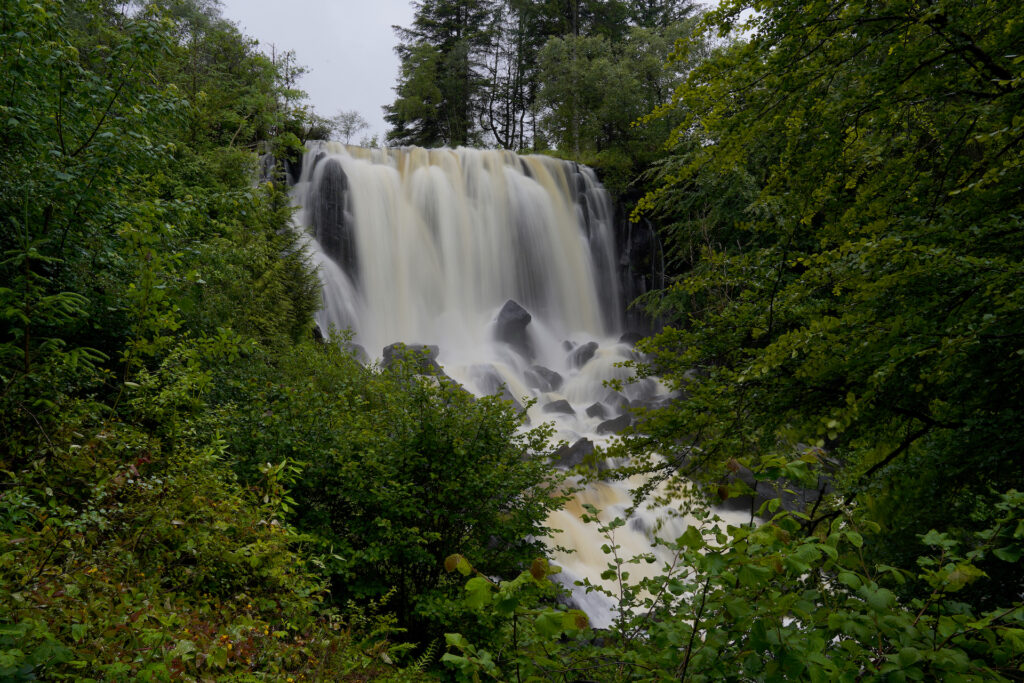
Tobermory and NE Mull
Tobermory’s idyllic setting on a calm bay and its cheerfully painted waterfront shops make it a great spot to explore for a few hours. Be aware that the shops in town do tend to close on the early side as the pace of town is quite relaxed. Tobermory Distillery offers tours and does produce some really nice whisky which we tried. If you’re visiting with a family check out Mull Aquarium to learn about local sea life. We came to Tobermory in the evening and enjoyed an outstanding dinner at MacGochans near the marina which features seafood and offers a huge and diverse menu. Several nice lodging options are available right along the water. If you’re looking for a castle stay, Glengorn Castle is about fifteen minutes outside of town and offers updated self-catering lodging in a historic castle and cottages with Glengorm Standing Stone nearby.
Just south of town is scenic Aros Park which includes trails through pretty wooded hillsides. We walked down to Aros Waterfall from the gravel car park along A848, a moderately easy (4/10) trail with several viewpoints of the cascading waterfall. Beware, there is some boggy ground sprinkled about. Unfortunately the sky broke open and starting raining pretty hard on us so we did not explore here for too long. The park offers several miles of trails, with multiple parking areas and a variety of scenery. Another coastal walk leads north out of town to picturesque Tobermory Lighthouse. Head to Ardmore Point on the very northern point of Mull for fabulous ocean and sunset views.
I don’t remember any other village in Scotland being as brightly painted as Tobermory, with a great reflection to boot! Tobermory is clearly the main tourism and commercial area on Mull, with great restaurants and lodging options.
Tobermory
The colorful buildings on the waterfront at Tobermory on the Isle of Mull are reflected in the bay’s calm waters. This brightly-painted village seems to be the biggest town on Mull, although it was pretty dead when we visited for a few hours in the late afternoon on a Friday in early July. The bay’s … Read more
Northwest and Central West Coasts
Mull is oddly shaped, with two sea lochs incising deeply into its western side creating three sections of coastline. The easiest way to reach the northern two sections is through Salen. This entire area is remote and windswept, with glorious empty beaches and stunning scenery. Follow the coastline north past two-tiered Eas Fors Waterfall followed by Whisky Cave to the idyllic beaches of Port a Ba, Langamull Beach, and Calgary Beach. Near these beaches are a collection of Neolithic sites including standing stones at Kilmore and Dervaig plus the more remote Quinish Stone Row and the ruins of Clac Gugarich near Whisky Cave. There are also several small freshwater lochs dotting the northwestern area of Mull. The smaller isles of Ulva and Gometra beyond it are reached via a short ferry and feature a standing stone and historic cemetery.
The smaller, more central section of western coastline includes the walking paths at Tiroran Community Forest and a pretty roadside waterfallknown as Allt Chreaga Dubha Waterfall. A more challenging and longer hike leads out to the rocky shoreline where a Fossil Tree is imprinted in the basalt cliffs near a coastal waterfall. Loch Ba is quite scenic, and if you decide to head in this direction make sure to check out MacQuarie’s Mausoleum, the resting place of The Father of Australia.
One of the main reasons I wish to return to Mull is to spend a day exploring these two sections of the island which we could not fit into one day.
Mull was the place where saw Scotland’s iconic Highland Coos, including this fellow who was standing right next to the road. I pulled over next to it and took this shot from the driver’s seat…it waited very patiently while I fiddled with my camera, just standing there. If you think this one is cute you should see the calves!
Highland Coo
This is not a cow, it is a Coo. A Highland Coo to be exact, which are surprisingly hard to find. We were delighted to happen upon this guy standing right next to a passing place along a single-track road on the Isle of Mull in Scotland’s Middle Hebrides. We pulled up next to it, … Read more
Southern Mull
A 848 heads west along the southern valley, quickly reducing to a paved single-track road a few miled outside of Craignure. The route becomes incredibly scenic as is it leaves civilization behind, with a beautiful but easy-to-miss viewpoint of The Three Lochs near the summit of the highland crossing. Shaggy highland cows (“coos” as the Scots say) shared the fields with other breeds once the road meets up with the shoreline again. The road passes through a few seaside villages and mile after mile of pretty country on the long southern peninsula before finally ending in the village of Fionnphort at the southwestern tip of the island, your departure point for a visit to Iona and for tours of Staffa and Treshnish Isles.

Isle of Iona
The Isle of Iona is fairly small but had a gigantic role in Scotland’s early history. St Columba arrived in Scotland from Ireland in 563 and is credited with beginning Scotland’s conversion to Christianity. Iona Abbey and the monestary he founded there became the center of religious study and power in the old Scotch-Irish kingdom of Dal Riata for centuries with a small adjacent community which has supported the abbey for over a thousand years.
I talked a group of college-age visitors into shutting their most rowdy friend in this little chamber in Iona Abbey – a great place for him to think about his choices.
The Time Out Chair
Iona Abbey is perhaps the most important Christian religious site in Scotland. Found on the small island of Iona in the Middle Hebrides, the abbey has seen over 1500 years of history. The Book of Kells is believed to have been created here around 800AD by monks of the abbey. While exploring the incredibly restored … Read more
Iona Abbey
The Iona Abbey of today is much as it has been, supporting a religious community and holding services. The tourable grounds and chapel are the primary draw to the island, bringing hundreds of visitors each day. The grounds include several high crosses en route to the main abbey complex, an ancient burying ground in the churchyard, and a small rock outcropping where St Columba is said to have built a small structure where he could write while overlooking the scene.
The building we see today dates from the 1400s when the abbey was rebuilt by and subsequently housed a Benedictine order. A small shrine to St Columba sits inside a little chapel next to the entrance to the main church sanctuary. Inside the main church are delicately carved stone effigies of the 8th Duke and Duchess of Argyll, who started an initiative to restore the abbey in the mid 1800s as it was falling into ruin. The church has been restored again even more recently and was undergoing further exterior work when we visited. One of the ways specialists know the restorations have been successful is the ferns growing from the stone joints in the main chapel stay alive which means the building “breathes”. Take a peak inside the little room up the stairs in the back of the chapel – I imagine today it may serve as a space for breastfeeding mothers or parents of crying babies to quickly go but I prefer to imagine it as the “time out room” for when a monk got a bit rambuncious back in the day…too much communion wine? There are also some ancient and elaborately carved gravestones along the wall in the back of the chapel. Audio Tours are available free of charge at the admission kiosk which I highly recommend getting as they are quite informative. The majority of Iona Abbey is handicapped accessible although some outdoor surfaces are gravel or grass.
Adjacent to the main chapel is a pretty courtyard surrounded by a covered walkway with more carved gravestones on display which resembles the courtyard at Hogwarts from the Harry Potter films. A more modern bronze sculpture graces the courtyard’s center. The gift shop is attached to the courtyard as are the Iona Community meeting rooms. Unfortunately none of the former quarters for the monks are tourable.
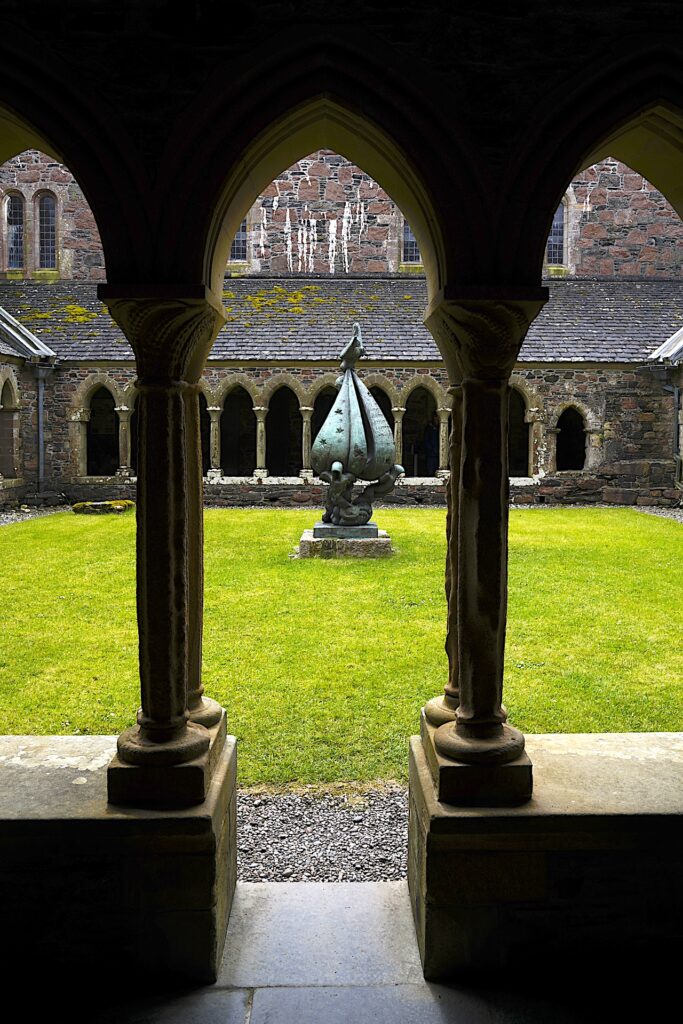
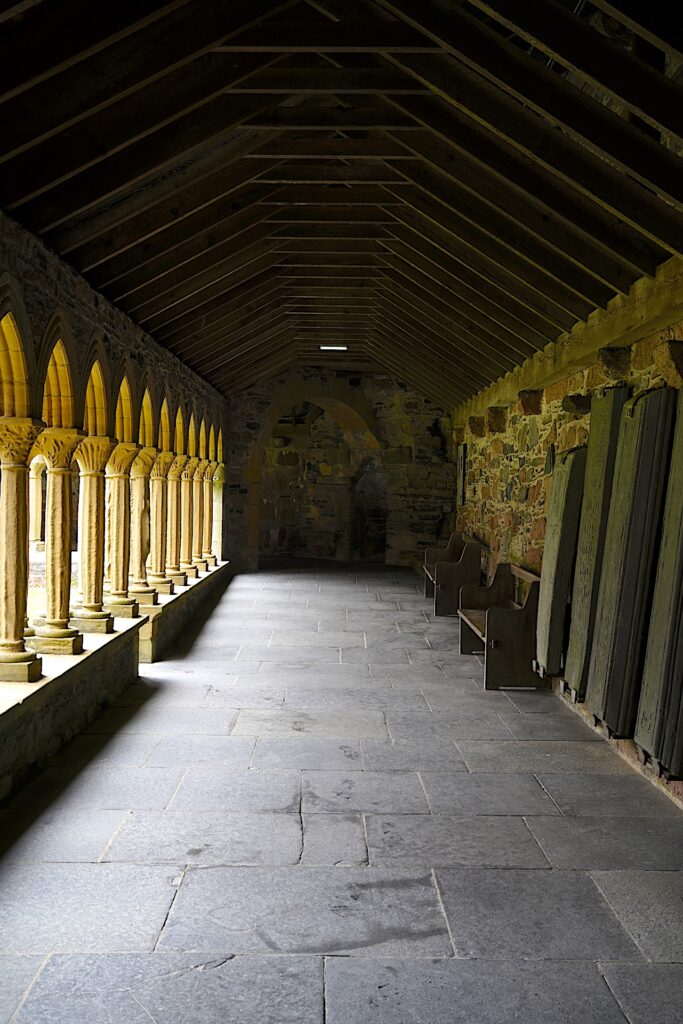
Outside around the back of the complex is another chapel as well as the Abbey Museum. This small space is packed with historical objects from Iona Abbey’s past and takes at least half an hour to look through, much longer if you really dive in. Included in the collection is a replica of the world famous illuminated manuscript which was written and so artistically drawn here in the 700s, known today as the Book of Kells. The original was taken from here by monks and secretly transported to Ireland to safeguard it from being stolen or destroyed during the Viking raids on the abbey around the turn of the 9th century. A number of beautifully carved headstones, examples of period weaponry, ancient everyday objects, and the broken remains of one of the abbey’s four high crosses round out this incredible display.
George Campbell and Ina MacNeill, the 8th Duke and Duchess of Argyll, lie together eternally inside Iona Abbey.
An Eternity With You
Light from a window above bathes soft, cold light onto the skillfully carved effigies of George Campbell and his wife Ina MacNeill. George Campbell became the 8th Duke of Argyll, Scotland and was widely considered to be one of the most gifted thinkers of the 19th century, en par with figures like Benjamin Franklin and … Read more
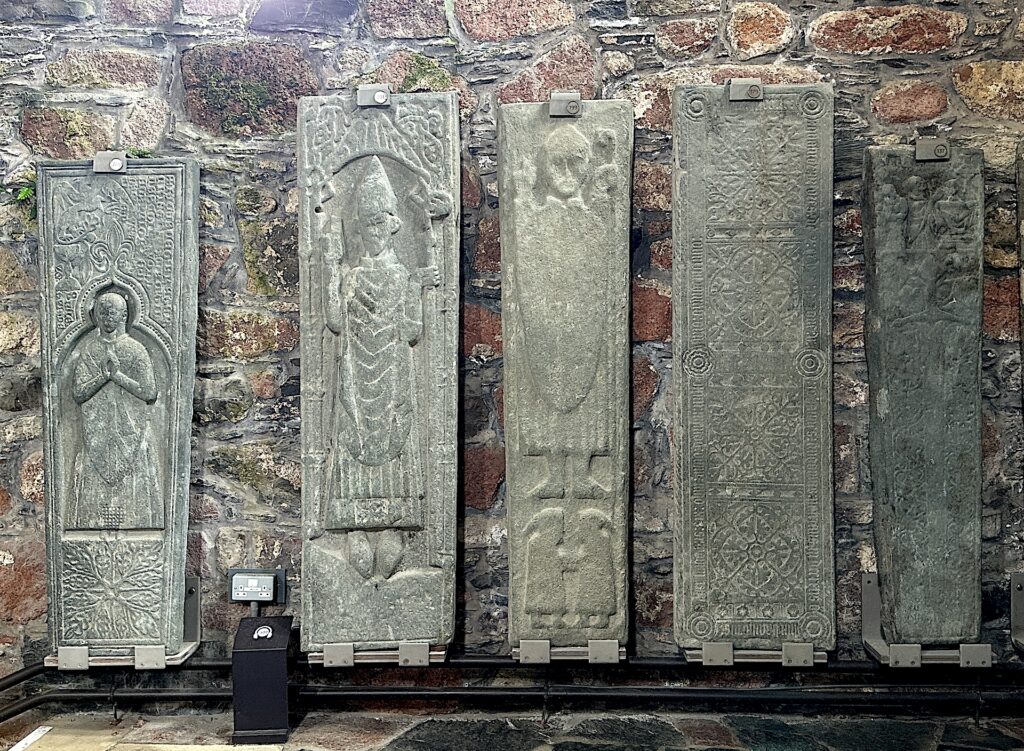
En route to Iona Abbey visitors stroll the past the ruins of Iona Nunnery which date to the 1400s. The ruins are not large and visitors are welcome to explore. Adjacent to Iona Abbey is small St Oran’s Chapel, built by the MacDonald lords and surrounded by royal burials that span nine centuries. Today this small chapel is the oldest surviving structure on Iona. Inside are more ornately carved gravestones as well as burials beneath the floor. Like Iona Nunnery, the chapel and grounds are free to explore.
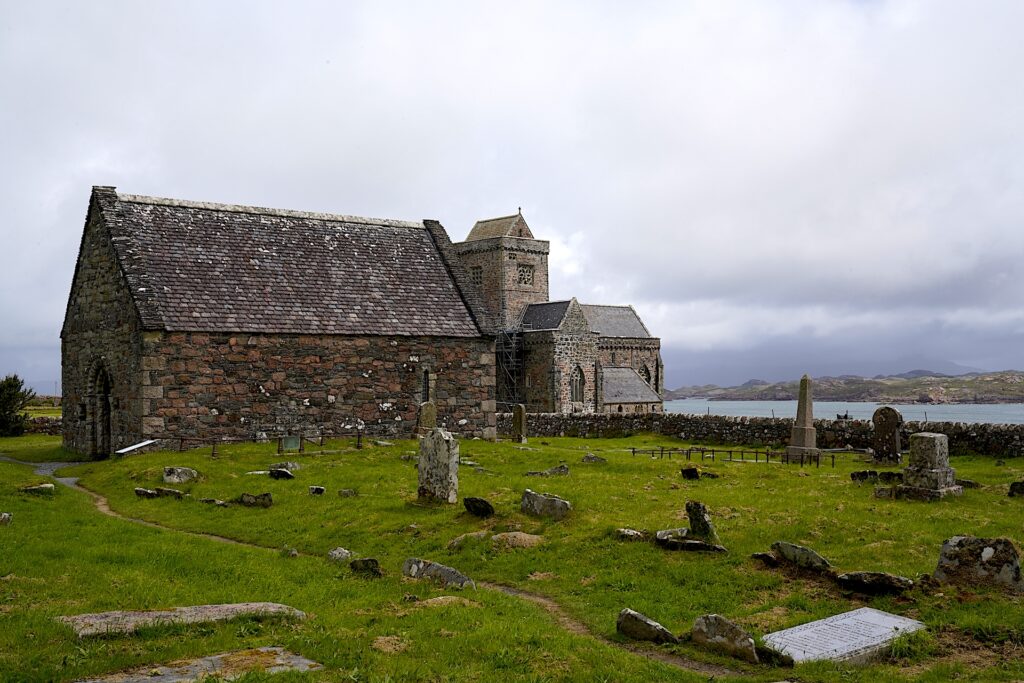
Iona Scenery
Iona is windswept with very few trees, consisting mainly of grassy fields flanking the low rolling hills. The coastline is rocky but includes a few glorious small beaches with white sand and clear turqouise water. At the north end of the island is the historic beach known as White Strand of the Monk, where Iona Abbey monks battled Viking raiders in defense of the abbey at the end of the 8th century. Bay at the Back of the Ocean, on the island’s western shore, includes several beach areas, tidepools, and small grass-covered dunes. Another small beach at St Columba’s Bay, the spot where St Columba is said to have first landed on Iona, features some of the pretties beach pebbles you will ever find. A walk around the island’s perimeter takes about an hour plus whatever time you spend frolicking on the sand – easily half a day if the weather is nice.

Food, Lodging, and Transportation on Iona
Iona can only be reached via boat from nearby Fionnphort on Mull. The crossing takes only ten minutes. Ferry reservations can be made but are generally not necessary as the ferry crosses quite frequently. Taking a car on the ferry is possible with advanced arrangements, but generally cars are discouraged on Iona and everyone just walks. The air is wonderfully fresh here and as long as the day is calm walking is a joy. The little village of Baile Mor has several restaurants and lodging options. We got coffee and snacks at Argyll Hotel and then sat outside and enjoyed the sunshine in their grassy yard overlooking little Iona Beach. We were planning on having lunch at popular Martyr’s Bay Restaurant while we waited for the ferry, but the ferry arrived at that moment so we hopped aboard and headed back across to Fionnphort with the plan to eat there instead. That was a mistake as there are only a few food options in Fionnphort and at that point it was in between lunch and dinner. Ailidh on Iona offers good-looking takeout options including stone-fired pizza and sandwiches plus a small outdoor seating area.
Staffa and Treshnish Isles
The small volcanic islands of Staffa and the more remote Treshnish Isles are inhabited only by local wildlife, which is abundant. Wildlife viewing tours of both are available from local tour operators Staffa Tours with shorter boat tours departing from nearby Fionnphort or Iona, and longer full-day tours departing from Oban on the Scottish mainland. All of these tours provide the opportunity to see puffins, sea eagles, and many other species of seabirds along with seals, whales, and dolphins. We took the tour to Staffa hoping to land on the island so we could enter awe-inspiring Fingal’s Cave as well as get a chance to hang out with the puffins for a moment, but alas the seas were far too rough for the boat to land so we just circled the island before getting dropped off on Iona. The skipper was also our tour narrator and he did a great job explaining what we were seeing. Under calm oceanic conditions tourists normally have one hour to explore Staffa, which is enough time to visit the cave, which you can actually go fairly far back into, as well as hike out over the rolling grassy top of the island and check out the views from the clifftops. Pro tip – there’s usually more light in the cave in the morning.
I must say that Staffa is quite magnificent, with massive columnar basalt cliffs dropping straight into the sea and a flurry of birds in flight all around it. Fingal’s Cave is so impressive that early Romantic period composer wrote music inspired by his visit here almost 200 years ago which captures the beauty and drama of this place quite well…the first two minutes are particularly descriptive. Even though we did not land on Staffa I was glad we went. Landlubbers beware, if the sea is rough you’ll likely be in for a queasy stomach!
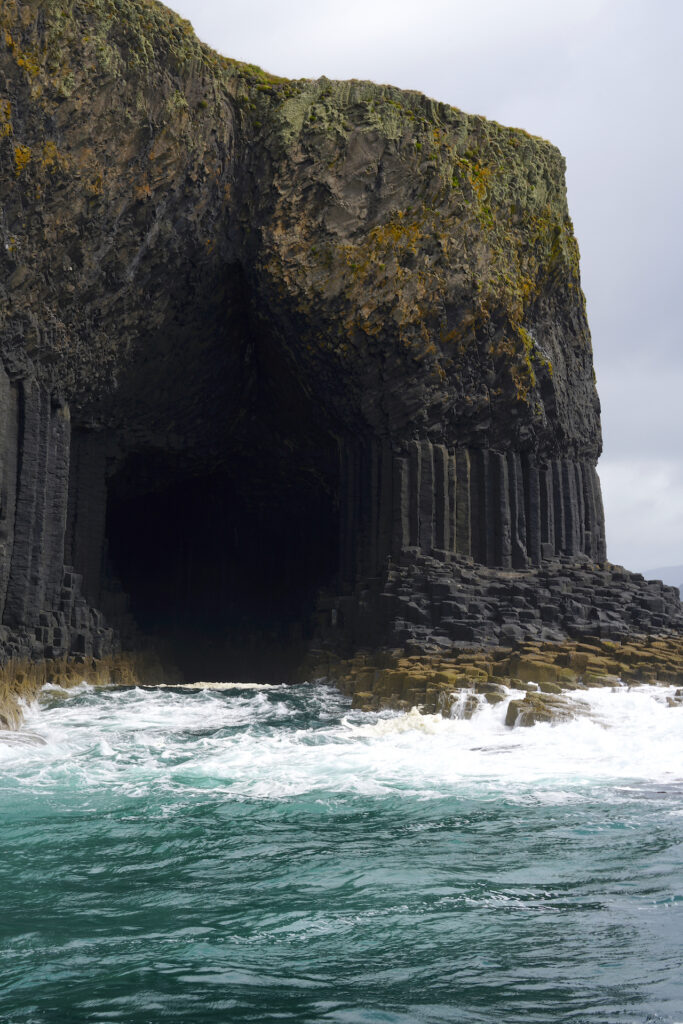
Mull and Iona Itineraries
You cannot see all of Mull and its sibling smaller islands in one day – perhaps you could if the roads were better but as things stand it just takes too long to travel from point to point. Plus, in such a wild place, maybe its better to slow down the pace to match with the locals, for whom rush hour simply does not exist. My advice is to plan four days here – one on Iona and three on Mull.
Gold, orange, and sage lichens decorate the salmon-toned granite boulders at Fionnphort Bay on the west end of the southern peninsula of Mull. The beach was empty except for sheep, which was a new experience for me. Beware – those dark brown pebbles in little piles aren’t pebbles!
Fionnphort Bay
Apricot-toned granite boulders are speckled with lichen at Fionnphort Bay on the Isle of Mull in Scotland’s Middle Hebrides islands. Sheep came right down onto the beach, which was a new one for me. The water was both clear and cold, and appeared a nice light blue-green when the sun came out.
Four Days / Three or Four Nights on Mull and Iona
My recommendation is to head out in the evening the night before, head across Mull to Fionnphort and then take the last ferry to Iona to spend the night there so you can wake up on the island. Spend your first full day completely on Iona, visiting Iona Abbey in the morning and exploring the island trails and beaches after lunch. Head to Beach at the Back of the Ocean for sunset if the sky is looking like there will be color. If you can’t make it to Iona the night before then get there as quickly as you can in the morning so you can fit everything in – be on the 6:30AM ferry from Oban to Craignure and you will make it to Iona by around 9AM. Spend the night on Iona.
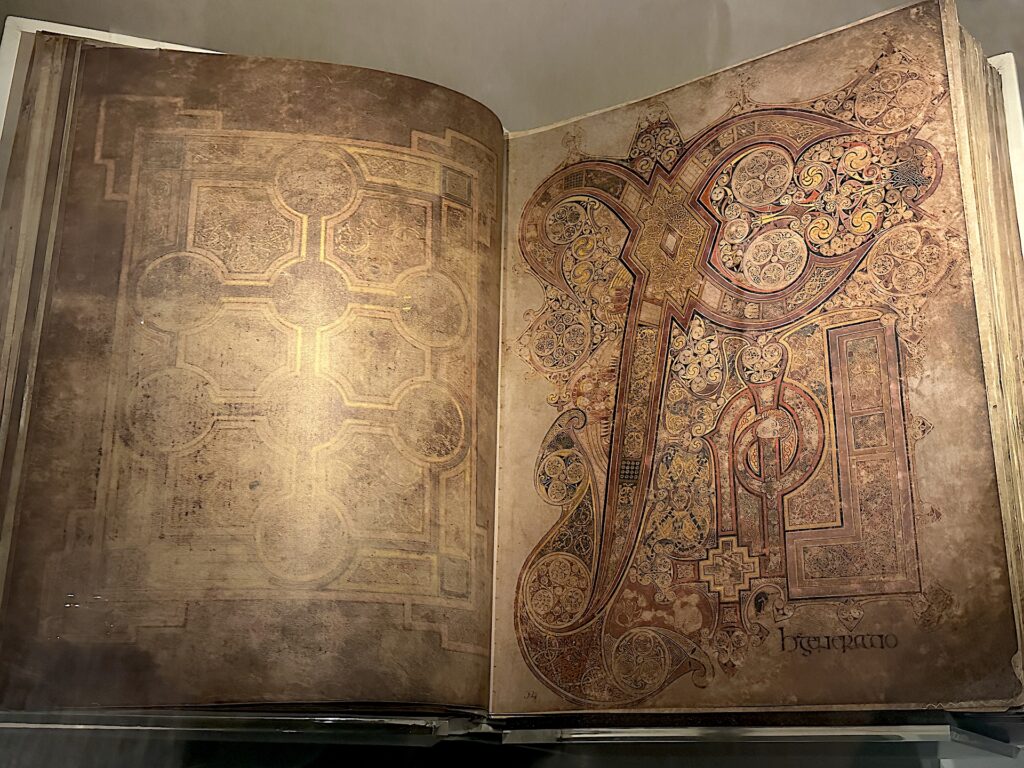
On your second full day take a half day tour in the morning to either Staffa or Treshnish Isles. Tours leave from both Iona and Fionnphort on Mull – you could do the ten minute crossing back to Mull either before or after your tour. In the afternoon have lunch in Fionnphort and start driving back across Mull, then turn left onto B8035 and take the scenic route along the island’s Central West Coast, stopping at the roadside Allt Chreaga Waterfall, Loch Ba, and any other viewpoints that catch your fancy. Then head on to Tobermory, check in to your hotel, and enjoy a nice dinner in town.
On day three go explore the northwest portion of the island by taking B8073 west from Tobermory. You’ve got lots to explore here, including several beach options, a few Neolithic sites near Kilmore, Eas Fors Waterfall, or even taking the short ferry across to Ulva and Gometra for a few hours. Head back to Tobermory via Salen, have dinner, then head to Tobermory Lighthouse or Ardmore Point to take in the evening.
On your last day start heading back to Craignure, stopping at Aros Waterfall for a morning stroll. Then drive just past Craignure and spend some time at the island’s pair of castles – Torosay and Duart. Enjoy a late lunch at Duart Castle, then catch your ferry back to Oban and head on home or to your next destination.
I like this itinerary, especially with the option of staying two nights on Iona because that island is quite beautiful and also so historically important. On the rare cloudless night I imagine the stars could be absolutely stunning.

Three Days / Two Nights on Iona and Mull
On day one be on the 6:30AM ferry from Oban to Craignure, then arrive in Fionnphort by 9AM, in time to take the 9:30AM tour to Staffa. Disembark the tour on Iona around 11:30AM and spend the majority of the day on Iona, exploring the Abbey and visiting The White Strand of the Monk beach nearby. Have lunch and then happy hour snacks on Iona. Take the last ferry from Iona back to Fionnphort, then drive back across Mull and onward all the way to Tobermory (almost two hours of driving), check in to your hotel, enjoy dinner, and retire for the night.
On day two head out to the northwestern side of Mull and check out any of the many options, including Neolithic sites, gorgeous secluded beaches with white sand, Eas Fors Waterfall, or even take the ferry crossing to Ulva for a few hours. Catch a glimpse of Loch Ba and take the short walk to Aros Waterfall as you complete the circle back to Tobermory.
On day three grab a coffee and some goodies, do a bit of shopping in Tobermory, and take the Distillery tour if that interests you. Then head back to the Craignure area, visiting Duart Caste for lunch and some time exploring the castle. Take a mid-afternoon ferry back to Oban and continue onto your destination from there.
Two Days / One Night on Iona and Mull
Take the 6:30AM ferry from Oban to Craignure on day one, then drive across southern Mull to Fionnphort, arriving around 9AM. Enjoy the tour of Staffa, then disembark on Iona. Grab an early lunch and head to Iona Abbey then continue on to White Strand of the Monk beach if the weather is nice. Head back across on the ferry around 4-5pm, then drive to Tobermory for dinner and your hotel.
On your second day spend the morning in Tobermory exploring the shops, Tobermory Distillery tour, and Mull Aquarium. Have lunch in town, then head back toward Craignure. If you’re into waterfalls a stop at Aros Waterfall as you start heading out of Tobermory is worth the half hour walk through the pleasant woods. Depending on your schedule either take the scenic route along the west coast, or visit Duart Castle or the ruins of Torosay Castle with its pretty walled garden just past the ferry terminal. Be sure you make it to the ferry at least half an hour before your sailing time!
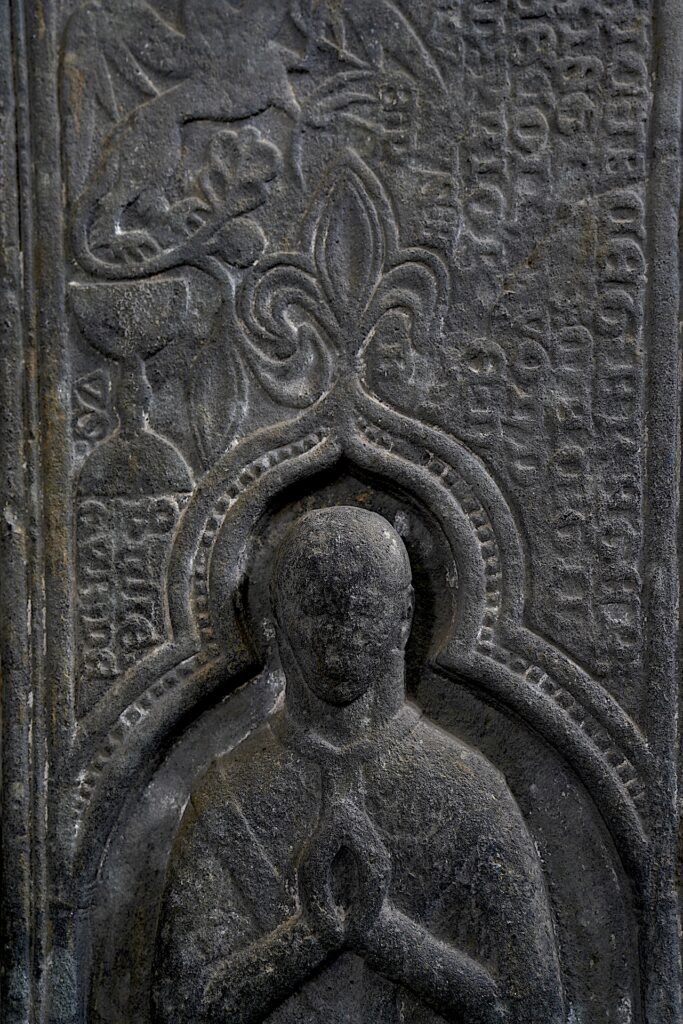
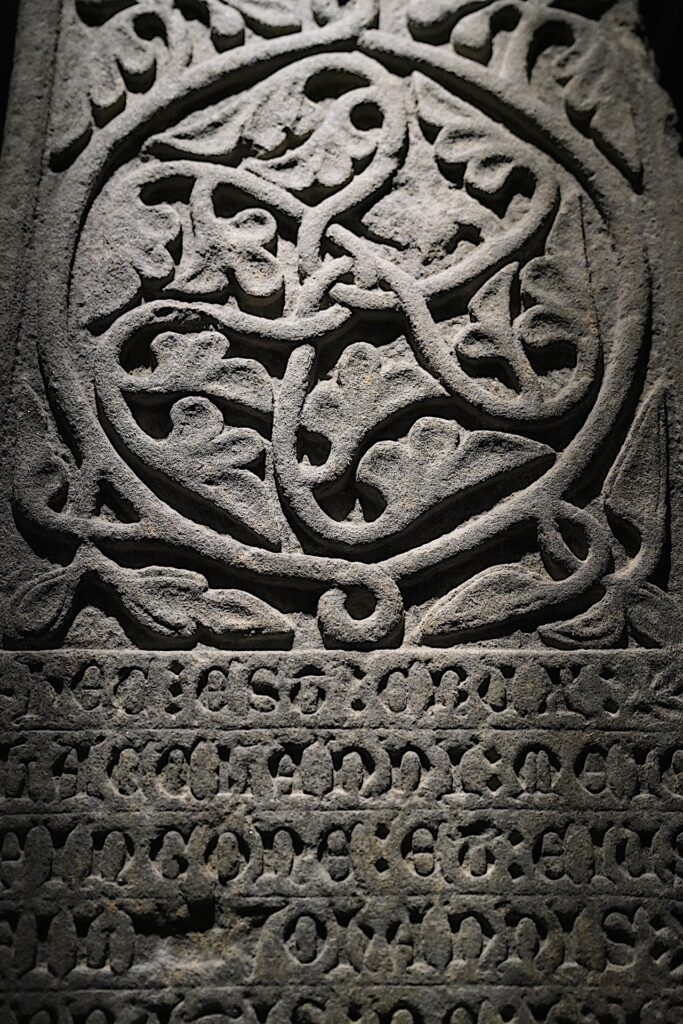
Mull and Iona in One Day
This is what we did and honestly it was a mistake because we barely saw anything. We concentrated on Staffa and Iona, then went to Tobermory for dinner via the main highway. It was a lot of driving because Iona and Tobermory are about as far apart from each other as possible. You really have to choose – Iona or part of Mull. My advice is to pick one area and focus on that – choose either Iona and Staffa, or Treshnish Isles, or Tobermory, or the castles, or the northwest beaches and neolithic sites, or Ulva and Gometra. Another option is to take a day tour to Staffa, Treshnish Isles, and even Iona that leaves directly from Oban. This is the best choice if you’re interested in wildlife viewing but you will spend a lot of time on the boat.
Rocky Landing
A large columnar basalt rock draped in seaweed protrudes from the clear blue North Atlantic Ocean off the coast of the Isle of Staffa in Scotland’s Middle Hebrides Islands. Strong winds of an advancing storm were whipping the sea into rolling, swirling froth the day we visited, creating a lot of ocean drama but also … Read more
Other Middle Hebrides Islands to Explore
Lismore
A visit to Lismore will take a few hours after a very short ferry ride which crosses only a few times per day. You’ll need a car or bike to get around as the island is too big to explore on foot. The island features the picturesque crumbling ruins of Castle Coeffin plus the even more destroyed ruins of Achanduin Castle at the island’s southern tip and the Iron Age circular fort ruin of Tirfuir Broch. If the weather turns nasty head to the Lismore Gaelic Cultural Center which offers a small museum and a cafe. Be sure to stop at Jubilee Bridge on the mainland when coming to or from the Lismore ferry to get a great view of nearby Castle Stalker standing tall on an offshore island.
Kerrera
Kerrera is found just across the water from Oban. The majority of the island is roadless with a trail network leading to most places of note. If you explore Kerrera try heading to the ruins of Gylen Castle at the island’s south end or to closer Horseshoe Bay which has a cool wooden shipwreck rotting on the beach. The more populated side of the island looks across the water to Oban. If the weather is nice you could spend the day hiking here and pretty much see all of the island.
Coll and Tiree
This pair of larger islands sit further offshore than others and takes several hours to reach by ferry. Highlights include Old and New Breachacha Castles on Coll which are currently closed due to restoration work, while on Tiree the beaches like Happy Valley and Balevullin Beach are prime destinations. Mainly this pair of islands are flatter, with lots of sheep and cattle grazing the pastures and a few villages here and there.
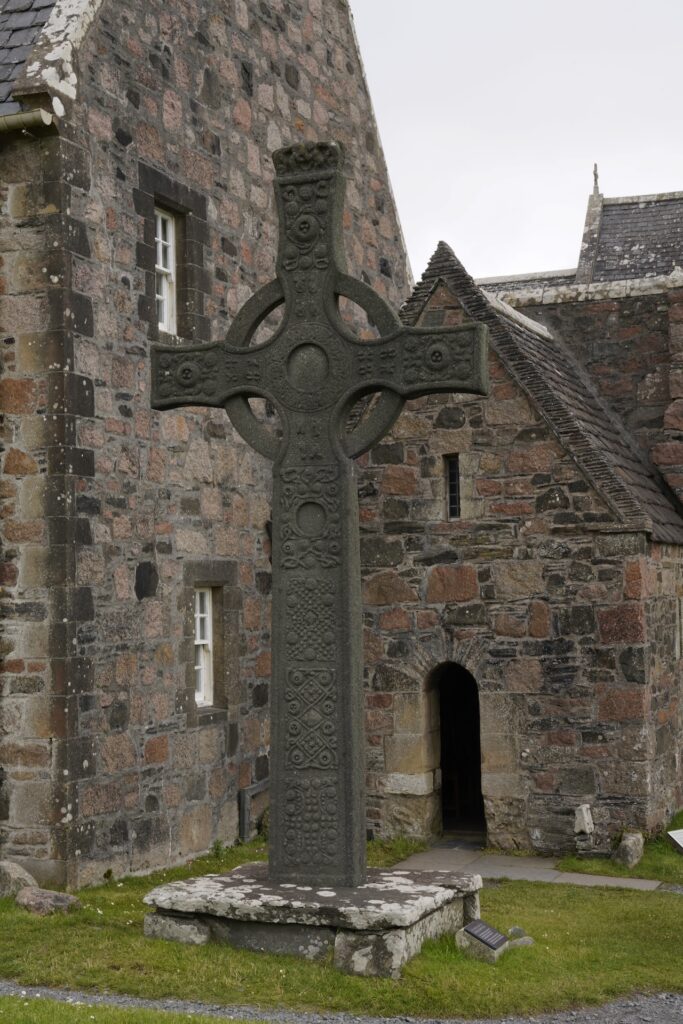
Visit the Middle Hebrides
The Isle of Mull and the Middle Hebrides Islands are worth spending some time exploring. Iona in particular stands out due to its historical significance and its beautifully fresh air and pleasant scenery. On Mull, Tobermory is quite picturesque if you’re looking for a pretty seaside village, while the island’s rugged West Coast features wild white sand beaches and several neolithic stone monuments. No matter what you choose you will not be disappointed with the time you spend of these amazing Scottish islands.
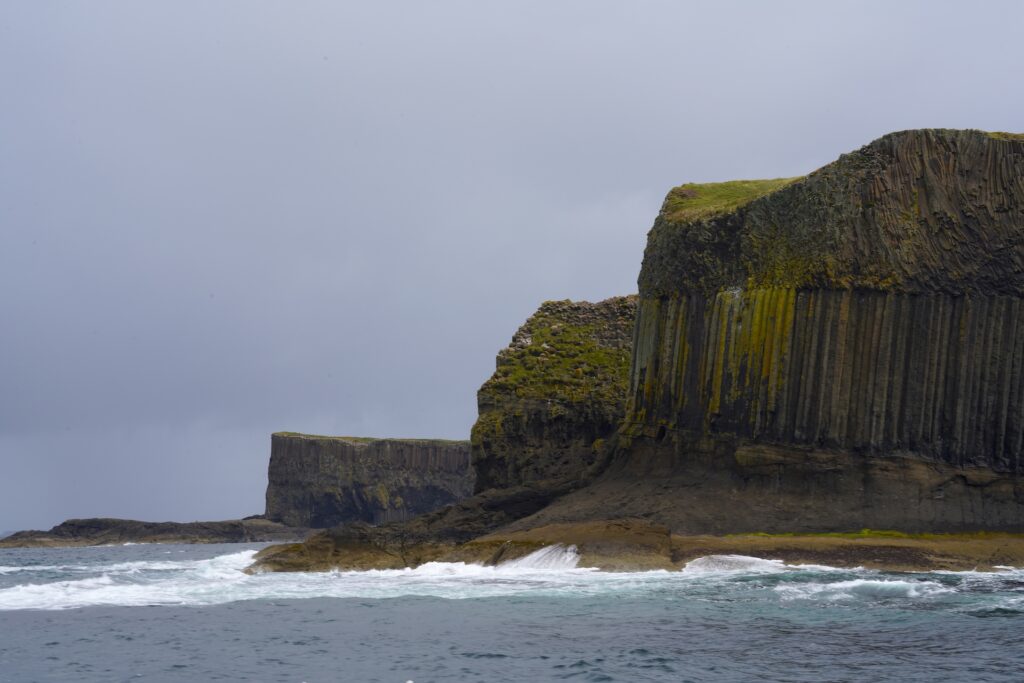
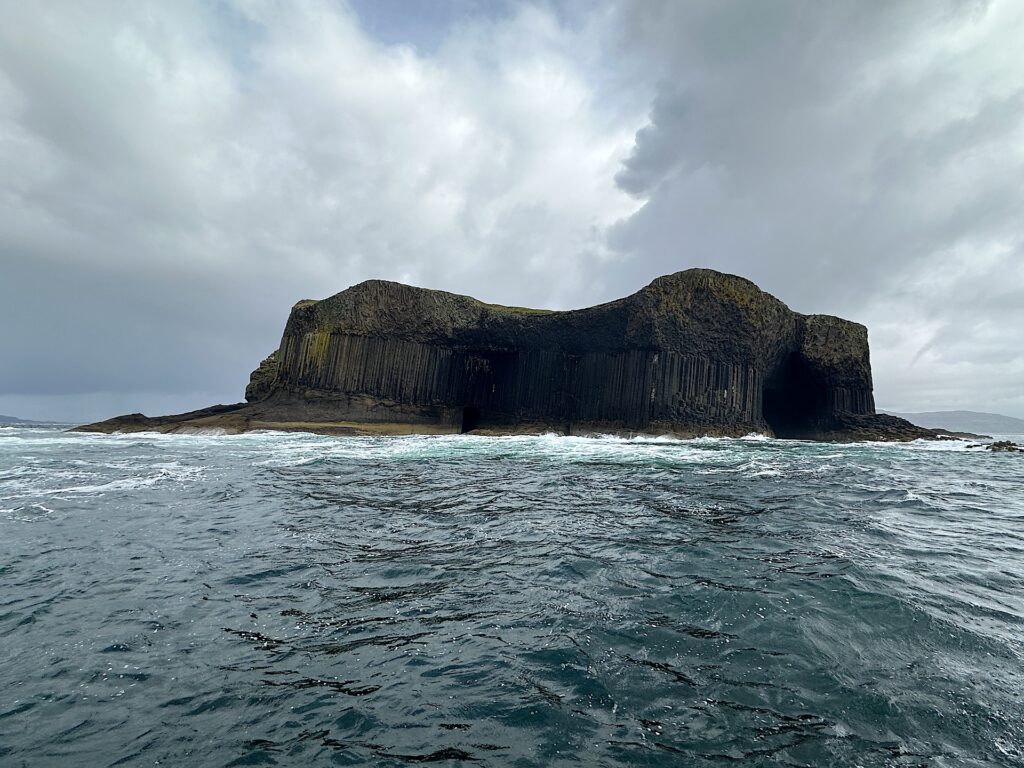
Links
Link for CalMac Ferries. Click on the island you want to visit, then from there you can view different ferry routes, see schedules, book tickets, and make vehicle portage reservations.
https://www.calmac.co.uk/en-gb/destinations/#
Link for Iona Abbey tickets and reservations.
https://www.historicenvironment.scot/visit-a-place/places/iona-abbey-and-nunnery
Link for Mull Historical Society, with information about the various historic locations on Mull including the island’s castles, forts, etc.
https://mull-historical-society.co.uk
Link for visiting Duart Castle – hours, event reservations, etc.
Link for Staffa Tours for wildlife tours visiting Staffa and Treshnish Isles.

